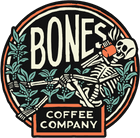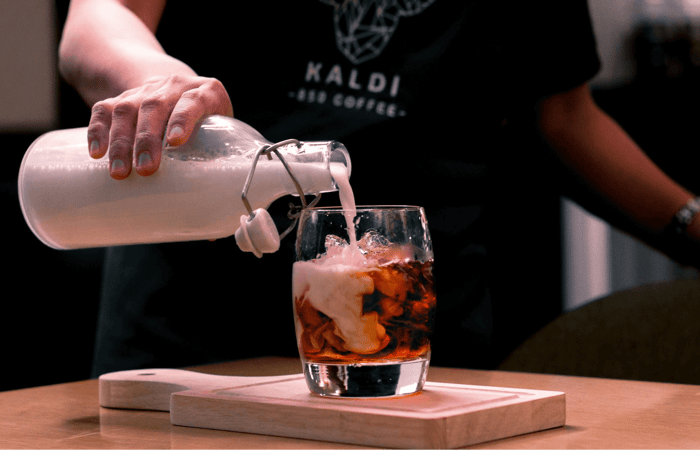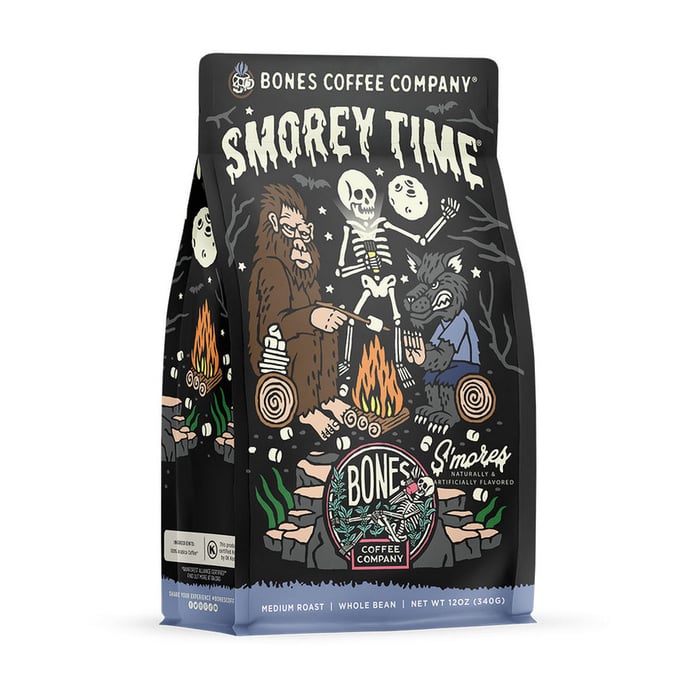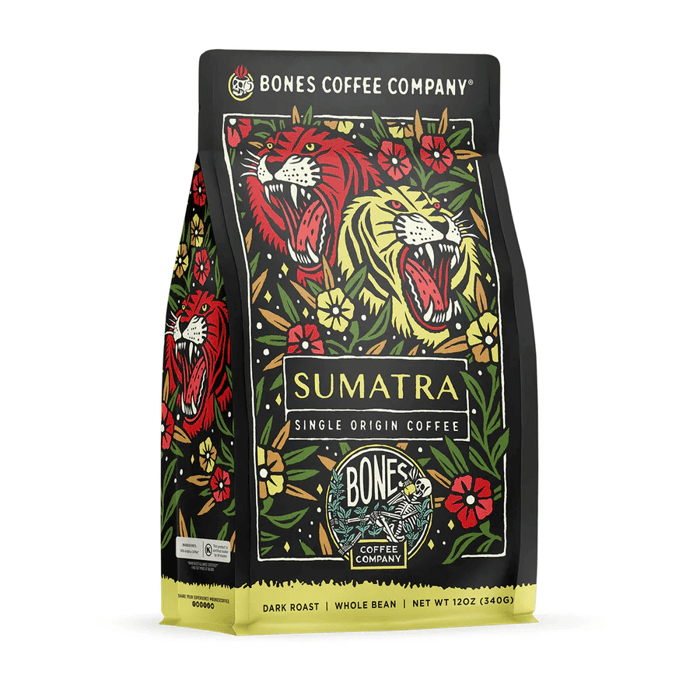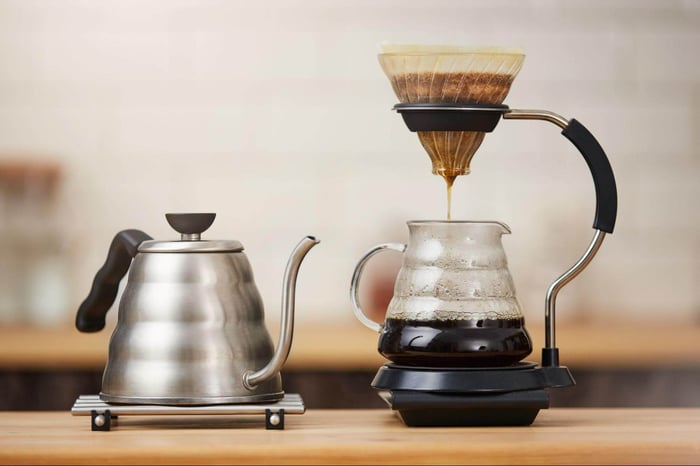Cold brew and iced coffee are often confused because they’re both served cold, but beyond their temperature, they are entirely distinct beverages. There's much more beneath the surface, from brewing methods to flavor profiles and caffeine content. Understanding these differences can help you choose the perfect drink for your taste buds and lifestyle.
Whether you’re a die-hard cold brew fan, a casual iced coffee sipper, or someone navigating the refreshing world of chilled coffee for the first time, this comprehensive guide will give you everything you need to know about these two beloved drinks.
Cold Brew Vs. Iced Coffee
Before diving into the details of each beverage, it's important to understand the key differences between cold brew and iced coffee. While both are refreshing, chilled coffee options, their brewing methods and flavors vary significantly.
Let’s take a closer look at how each is made and what makes them unique.
Cold Brew
The cold brew method is a coffee preparation process that involves steeping coarse coffee grounds in cold water for 12 to 24 hours. This extended steeping process extracts a rich, smooth, and often slightly sweet flavor. The result is a concentrated cold brew coffee that’s typically served over ice and can be diluted with water, milk, or milk alternatives.
Iced Coffee
Iced coffee drinks, by comparison, start with a standard hot brewing method. Coffee is brewed with hot water—which releases bright and bold flavors—and then cooled before being poured over ice. It’s quick to make and retains the full-bodied taste reminiscent of traditional hot brewed coffee, just chilled.
While both drinks are served cold, their brewing methods and resulting flavor profiles make them fundamentally different. Loving one doesn’t necessarily mean you’ll enjoy the other—and that’s what makes this comparison so intriguing.
Brewing Methods
To fully appreciate cold brew and iced coffee drinks, it's helpful to look at their distinct brewing methods. Each drink offers a different experience, whether you're in the mood for a slow, smooth infusion or a quick, bold pick-me-up.
Let's explore the unique processes that bring these two beverages to life.
Cold Brew—A Long, Slow Process
Cold brew relies on time rather than heat to extract flavors. Coarse coffee grounds are combined with cold or room-temperature water at a high coffee-to-water ratio and steeped for 12 to 24 hours.
After steeping, the mixture is filtered to create a smooth concentrate that can be customized with water, milk, sugar, or flavorings.
For cold brew coffee enthusiasts, a great coffee brand like Bones Coffee Company can help elevate the taste with their diverse flavors—such as a rich caramel or the nostalgic sweetness of S'morey Time coffee—that work perfectly for slow brewing.
Minimal equipment is required—just a jar, strainer, and patience—but many coffee lovers invest in cold brew makers for convenience and better filtration.
Iced Coffee—A Quick Transformation
Traditional iced coffee benefits from the speed of hot brewing but finishes with cooling. The most common method involves brewing double-strength coffee and chilling it before pouring it over ice.
Alternatively, Japanese-style iced coffee brews directly onto ice to preserve delicate flavors and aromas.
Because hot water extracts flavors quickly, iced coffee retains brighter and more acidic characteristics reminiscent of traditional hot brewed coffee. It’s perfect if you’re short on time or prefer crisp, punchy flavors.
Pro Tip: For a smoother cold brew, experiment with different coffee-to-water ratios based on your personal taste. If you prefer a bolder flavor, try increasing the coffee grounds slightly for a richer concentrate. |
Flavor Profile Breakdown
The flavor of your coffee is shaped largely by how it’s brewed. Cold brew and iced coffee each offer distinct taste experiences influenced by their unique preparation methods. Let’s take a closer look at how these brewing techniques impact flavor and which might suit your palate best.
Cold Brew
Smooth and naturally sweet. Without heat extraction, oils and acidic compounds remain subdued, resulting in a mellow body with lower acidity. Cold brew coffee often carries chocolatey or nutty undertones and may have a creamy mouthfeel—even without milk.
If you’re after a rich, smooth cold brew, brands like Bones Coffee Company offer fun and flavorful options to enhance your drink.
Iced Coffee
Bright and bold. Hot brewing brings out acidity and bitterness more prominently, creating an intense and vibrant flavor profile. Fruity or citrusy notes often shine through depending on the bean origin and roast.
Your choice depends on preference:
If you love smooth, low-acid drinks with subtle sweetness, cold brew coffee is your match.
If you crave vibrant flavors with sharp edges, iced coffee delivers the punch.
Caffeine Content and Strength Comparison
When it comes to caffeine, the brewing method plays a crucial role in determining the strength of your coffee. Cold brew and iced coffee each have their own way of delivering that energizing boost, but which one packs more punch? Let’s break down the differences and compare their caffeine levels.
Cold Brew
Cold brew coffee is indeed typically made as a concentrate, using a higher coffee-to-water ratio than iced coffee. This results in more ground coffee and, consequently, higher caffeine content per ounce. However, it is usually diluted with water, milk, or milk alternatives before serving, which reduces the overall caffeine strength when consumed.
Iced Coffee
Iced coffee is brewed with a standard coffee-to-water ratio, so it usually contains less coffee per ounce than cold brew. To compensate for the dilution caused by melting ice, some people brew it double-strength. This method helps maintain the desired flavor and caffeine content, even after the ice melts.
Caffeine Levels
While cold brew tends to have higher caffeine content per ounce due to its concentrate nature, it’s important to note that the final caffeine level in both cold brew and iced coffee will depend on factors like the exact brewing method, the ratio of coffee to water, and the amount of dilution before consumption.
Cold brew may seem stronger overall, but once diluted, its caffeine content may be closer to that of iced coffee, depending on how it's prepared.
Health Benefits and Considerations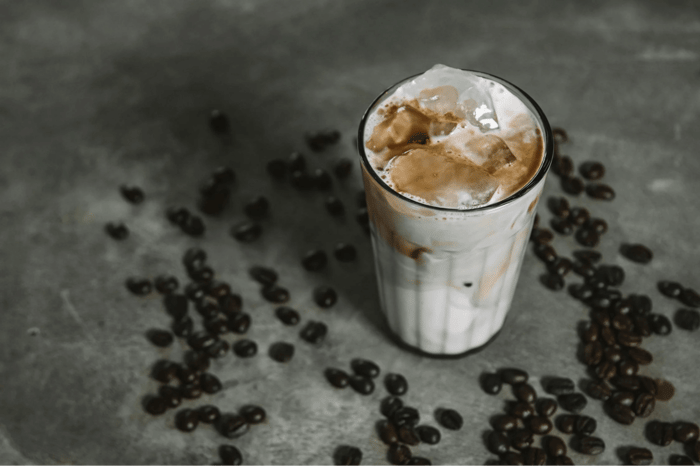
Both cold brew and iced coffee offer health benefits thanks to their antioxidant content and ability to boost mental clarity through caffeine. However, there are nuances worth noting:
Cold Brew
Its lower acidity makes it gentler on sensitive stomachs. Many drinkers find they need less sugar or cream due to its natural sweetness—a bonus for those watching calorie intake or avoiding additives. For example, if you enjoy a naturally sweet and mellow cup, a cold brew coffee using products from Bones Coffee can give you that smooth taste without needing extra sugar.
Iced Coffee
Retains more chlorogenic acids (antioxidants) due to hot brewing methods. These compounds may offer additional health benefits while preserving the bean's full nutrient range.
That said, moderation is key:
Excessive caffeine can disrupt sleep patterns or cause digestive irritation. Added sugars or creamers can turn either drink into a calorie-heavy indulgence.
Serving Styles and Pairings
Both cold brew and iced coffee offer unique ways to enjoy your favorite coffee, whether you prefer a simple, straightforward cup or something a bit more adventurous.
Exploring different serving styles and flavor pairings can elevate your coffee experience and help you discover new ways to enjoy these beverages. Let’s dive into some popular options for each.
Cold Brew
Cold brew’s versatility makes it shine:
- Dilute it to your preferred strength with water or milk.
- Try nitro cold brew coffee for a creamy texture infused with nitrogen gas.
- Pair it with flavored syrups like vanilla or hazelnut—or infuse it with cinnamon or lavender for an elevated experience.
If you want a twist on your cold brew, experimenting with flavors from Bones Coffee, like their rich maple bacon or the decadent chocolate mocha, can take your drink to the next level.
Iced Coffee
Iced coffee sticks closer to tradition:
- Serve it black or add milk/cream for balance.
- Sweeten it with sugar or syrups—or opt for indulgent variations like iced lattes (espresso + milk) or iced mochas (chocolate syrup + milk).
Creative twists include iced coffee with tonic water for carbonation or spiced infusions like cardamom. Its vibrant flavor makes it ideal for showcasing exotic coffee beans or light roasts.
Cost Comparison Between Cold Brew and Iced Coffee
When it comes to the cost of enjoying cold brew and iced coffee, the price can vary depending on whether you're brewing at home or buying from a coffee shop.
Understanding the factors that influence the cost can help you choose the option that fits your budget while still satisfying your coffee cravings. Let’s explore how these two beverages stack up in terms of affordability.
At Home
- Cold Brew: Slightly pricier due to higher bean usage (it’s brewed as a cold brew concentrate). While mason jars work well as budget-friendly options, specialized cold brew systems may cost more. If you’re looking for a coffee that’s perfect for cold brew, Bones Coffee’s unique offerings, like their pumpkin spice or bourbon pecan, can add fun flavor to your DIY coffee creations.
- Iced Coffee: More affordable since it uses standard brewing ratios without requiring specialized equipment—just a brewer and ice.
In Cafés
A cold brew coffee typically costs more due to its labor-intensive preparation process:
Coffee Type | Average Price (USD) |
Cold Brew | $5.14 |
Iced Coffee | $3.08 |
Its smoother flavor profile justifies the premium pricing—and customers generally don’t mind paying extra for quality.
Which One Should You Choose?
Choose cold brew coffee if you prefer:
- Silky-smooth drinks with low acidity.
- Batch-prepped beverages that last several days.
- A strong yet mellow caffeine kick.
Opt for iced coffee if you enjoy:
- Bright, punchy flavors reminiscent of traditional hot brewed coffee.
- Quick preparation without waiting hours.
- Experimenting with creative infusions or exotic coffee beans.
Both drinks are delightful—they simply cater to different moods and palates.
Health Tip: Cold brew coffee is a great choice for those with sensitive stomachs since its low acidity is gentler on the digestive system. On the other hand, iced coffee’s faster brewing method can help you get your caffeine fix more quickly, making it perfect for a morning boost without the wait. |
Final Sips
Though served cold, cold brew coffee and iced coffee offer vastly different experiences. Cold brew is mellow, rich, and subtly sweet—a product of patience, while iced coffee is vibrant, bold, refreshing, and fast.
Understanding their differences empowers you to make better choices based on your taste preferences, lifestyle needs, and caffeine cravings. Whether you lean towards the smoothness of cold brew or the boldness of iced coffee, both beverages deserve a spot in your rotation.
For those who enjoy experimenting with unique flavors, Bones Coffee Company offers an array of flavors that work perfectly for both cold brew and iced coffee. Whether you're drawn to a smooth vanilla, a more adventurous strawberry cheesecake flavor, or other unique cold brew and iced coffee recipes, their selection brings a fun twist to your chilled coffee experience.
